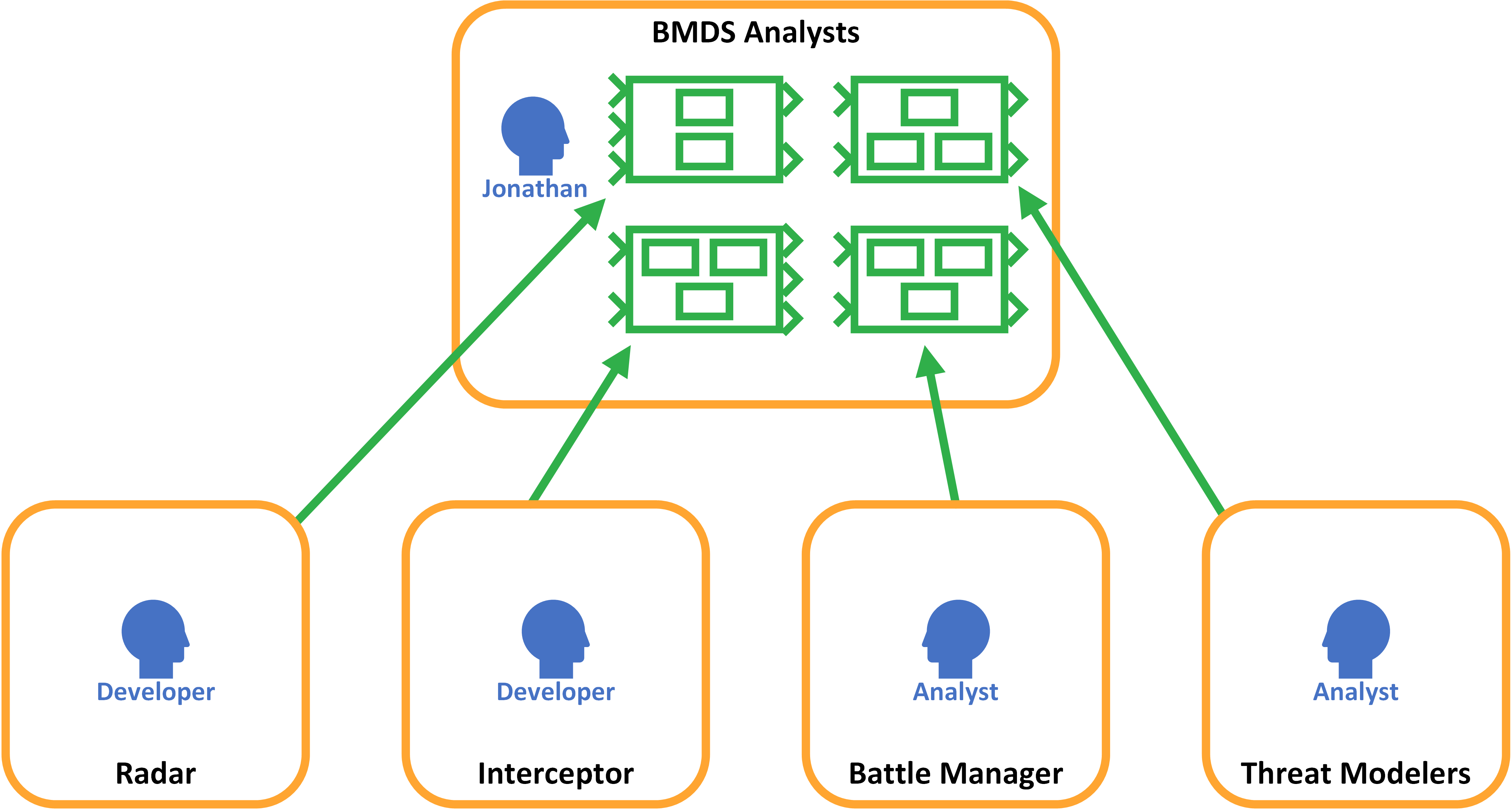

Low-Level Details
In order for the subsystem models to work within the integrated simulation, Jonathan must understand many low-level details in order to initialize and run it. He needs considerable support from the subsystem developers to get him up to speed:

The alert reader might notice that Jonathan’s support is the same as the support Joaquin had to provide in my previous post. However, it is much more frustrating from Jonathan’s point of view, because he has to learn other engineers’ models, and he has to do it for multiple models. In addition, he needs input from the subsystem developers, but he might not have authority to request their resources.
With SystemBlend, the situation is quite different. Jonathan is working with IntegrationMaster, and doesn’t need to mind-meld with the subsystem models:

SystemBlend saves time and frustration for the engineers that are integrating the simulation.
